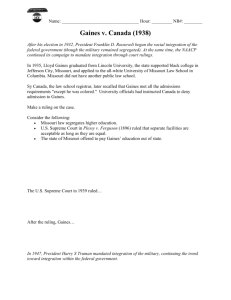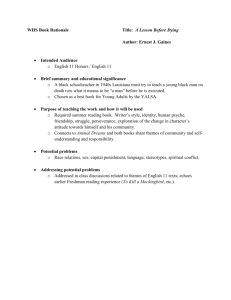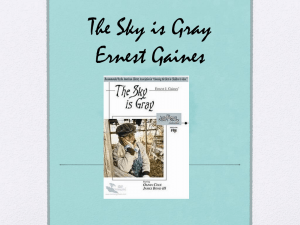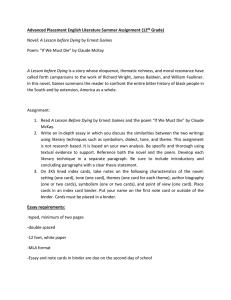slightly more winter hardy than Omar, but Gaines has fair field
advertisement
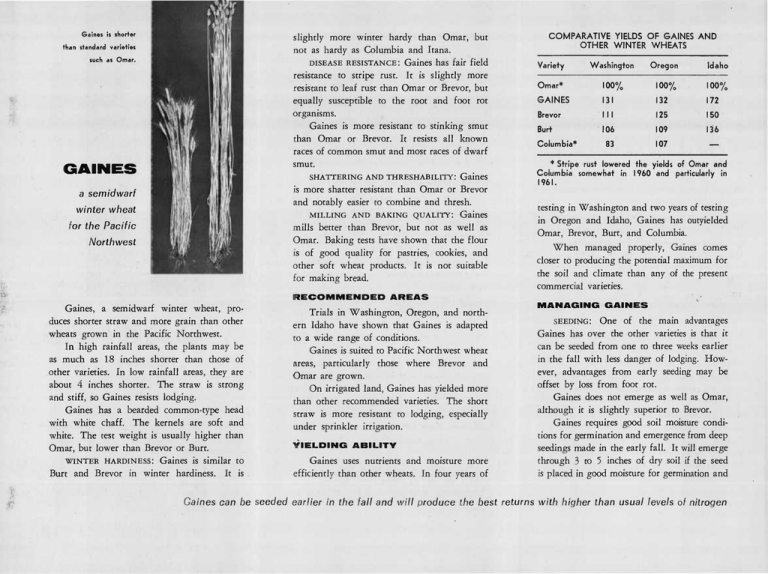
Gaines ii shorter slightly more winter hardy than Omar, but not as hardy as Columbia and Itana. DISEASE RESISTANCE: Gaines has fair field resistance to stripe rust. It is slightly more resistant to leaf rust than Omar or Brevor, but equally susceptible to the root and foot rot organisms. Gaines is more resistant to stinking smut than Omar or Brevor. It resists all known races of common smut and most races of dwarf smut. SHATTERING AND THRESHABILITY: Gaines is more shatter resistant than Omar or Brevor and notably easier to combine and thresh. MILLING AND BAKING QUALITY: Gaines mills better than Brevor, but not as well as Omar. Baking tests have shown that the flour is of good quality for pastries, cookies, and other soft wheat products. It is not suitable for making bread. than standard varieties such as Omar. a semidwarf winter wheat for the Pacific Northwest RECOMMENDED AREAS Gaines, a semidwarf winter wheat, produces shorter straw and more grain than other wheats grown in the Pacific Northwest. In high rainfall areas, the plants may be as much as 18 inches shorter than those of other varieties. In low rainfall areas, they are about 4 inches shorter. The straw is strong and stiff, so Gaines resists lodging. Gaines has a bearded common-type head with white chaff. The kernels are soft and white. The test weight is usually higher than Omar, but lower than Brevor or Burt. WINTER HARDINESS: Gaines is similar to Burt and Brevor in winter hardiness. It is Trials in Washington, Oregon, and northern Idaho have shown that Gaines is adapted to a wide range of conditions. Gaines is suited to Pacific Northwest wheat areas, particularly those where Brevor and Omar are grown. On irrigated land, Gaines has yielded more than other recommended varieties. The short straw is more resistant to lodging, especially under sprinkler irrigation. YIELDING ABILITY Gaines uses nutrients and moisture more efficiently than other wheats. In four years of COMPARATIVE YIELDS OF GAINES AND OTHER WINTER WHEATS Variety Washington Oregon Idaho Omar* 100% 100% 100% GAINES 131 132 172 Brevor III 125 150 Burt 106 109 136 83 107 — Columbia* * Stripe rust lowered the yields of Omar and Columbia somewhat in I960 and particularly in 1961. testing in Washington and two years of testing in Oregon and Idaho, Gaines has outyielded Omar, Brevor, Burt, and Columbia. When managed properly, Gaines comes closer to producing the potential maximum for the soil and climate than any of the present commercial varieties. MANAGING GAINES SEEDING: One of the main advantages Gaines has over the other varieties is that it can be seeded from one to three weeks earlier in the fall with less danger of lodging. However, advantages from early seeding may be offset by loss from foot rot. Gaines does not emerge as well as Omar, although it is slightly superior to Brevor. Gaines requires good soil moisture conditions for germination and emergence from deep seedings made in the early fall. It will emerge through 3 to 5 inches of dry soil if the seed is placed in good moisture for germination and Gaines can be seeded earlier in the fall and will produce the best returns with higher than usual levels of nitrogen no soil crusting occurs. Gaines is similar to Burt in early deep seeding characteristics. In early seedings at high soil temperatures, Gaines may germinate very slowly. The seed tends to be dormant at high temperatures, but this varies with the conditions under which the seed lot matured. Seed lots to be used in early seedings should be given a high temperature (90° F.) germination test to determine which ones will be the most suitable for use in the warmest seed beds. In late fall seedings at shallow depths, Gaines emerges as well as the other commercial varieties, or even better. Gaines is seeded at the same rate as the other varieties — 45 to 60 pounds per acre. Seed should be treated with hexachlorobenzene (HCB) at 2 ounces per 100 pounds of seed or with other effective seed treatment materials at the manufacturer's recommended rate. Seed treatment will help hold down the development of new smut races on Gaines. FERTILIZATION: Gaines breaks dormancy earlier in the spring than the other varieties. With a well balanced fertilizer program, the plants tiller or stool adequately. Most of the tests with Gaines were made at the fertility levels commonly used for standard commercial varieties. In trials at much higher fertility levels, Gaines often continued to produce economical returns. More research is needed to determine the most economical levels for general and special conditions in the Pacific Northwest. For the time being, however, it is suggested that approximately 25 per cent more nitrogen be used for Gaines than for standard height varieties. In high rainfall areas, an early spring topdressing of nitrogen fertilizer will be of advantage on Gaines. Gaines needs about the same amounts of other plant nutrients as the standard varieties. If the soil is low in phosphorus, potassium or other elements, they should be added to obtain maximum efficiency from Gaines. WEED CONTROL: Gaines starts growing relatively early in the spring, so it is more competitive with weeds. It appears to be as tolerant to 2,4-D as other wheat varieties. DEVELOPMENT OF GAINES Gaines was developed at Washington State University and tested in Washington, Oregon, and Idaho. In 1961, the foundation seed was released cooperatively by the Crop Research Division, Agricultural Research Service, U.S. Department of Agriculture and the Washington, Oregon, and Idaho Agricultural Experiment Stations. The original cross of Norin 10 (a Japanese semidwarf wheat) and Brevor was made in the greenhouse at Pullman in 1949. A selection from this cross was then crossed with a selection from a cross of Orfed and a sister selection of Brevor. A selection from this cross was then crossed with Burt in 1952. Selection for the variety was made at Pullman in 1956. Gaines was named in honor of the late E. F. Gaines, cerealist at Washington State University from 1913 to 1944. a semidwarf winter wheat for the Pacific Northwest Circular of Information 612 August 1962 Gaines was developed at Washington State University, Pullman, and tested in Oregon cooperatively by the U.S. Department of Agriculture and Oregon Agricultural Experiment Station agronomists. This publication was prepared by K. J. Morrison, Extension Agronomy Specialist, Washington State University, and O. A. Vogel, Agronomist, Agriculrural Research Service, U.S. Department of Agriculture. Agricultural Experiment Station Oregon State University Corvallls

